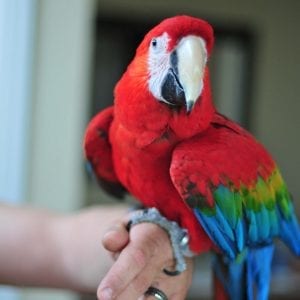PARROTS AND ESSENTIAL OILS
|
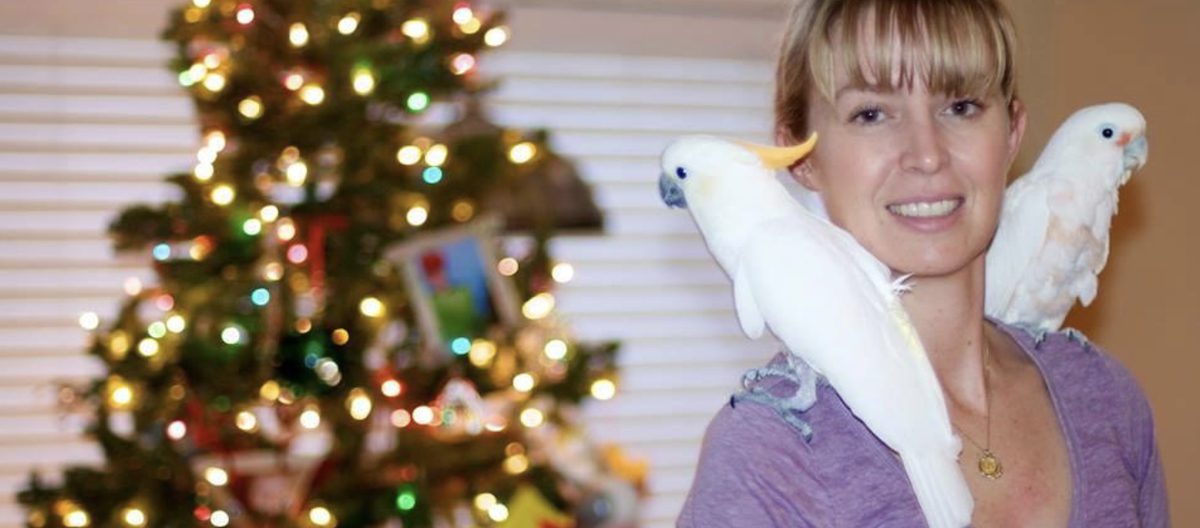
Please note that I am not a veterinarian. I do, however, share my home with eight parrots. I have spent a great deal of time researching the use of essential oils on and around parrots in an effort to insure that my birds are safe. Resources I recommend on this topic include The Animal Desk Reference: Essential Oils for Animals by Melissa Shelton, DVM and Aromatherapy for Parrots by Angela Nelson (with the caveats mentioned in my review on Amazon).
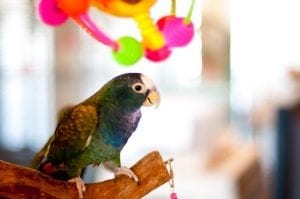
WHY WOULD WE USE ESSENTIAL OILS WITH PARROTS?
As any “parront” is aware, it is impossible to duplicate the wild environment for a captive bird but it is our responsibility to do our very best to create the most enriching and healthy environment we can. A lack of such an environment can result in many serious issues, including many of the problems that people cite for giving up or euthanizing their pet parrots including feather plucking, self-mutilation, constant screaming, aggression, and hormonal behaviors like frequent egg laying. So you are doing your best to create an enriching environment for your birds, including providing the largest possible cage, a variety of enriching toys, a varied and healthy diet, proper lighting, etc. But consider this: Essential oils are contained in the leaves, flowers, bark, seeds, and rinds of many plants, so wild parrots are CONSTANTLY exposed to essential oils as they climb, forage, play, and fly in their wild environment. Could the absence of essential oils in the life of companion parrots be part one of the missing links in companion parrot care? This is certainly worth considering.
BRANDS TO USE WITH PARROTS
Birds are extremely sensitive to toxins, so it is critical to use only top quality essential oils with them. The vast majority of essential oils on the market are not safe to use with parrots and drug store and health food store brands should be strictly avoided. For further advice about brands that have been used safely by other parrot-owners, please join our Facebook group.
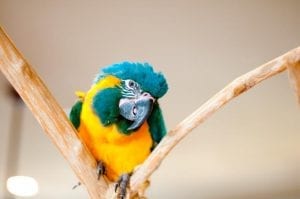
OILS TO AVOID WITH PARROTS
There is some disagreement about whether there are particular essential oils that must be avoided with birds. Some online sources state that melaleuca, pine oils, cedarwood, and citronella (and blends that include them) are toxic to birds, but none of these sources cite the source of this recommendation. As I look over this list of oils to avoid, it occurs to me that almost all of them are oils that are commonly available in synthetic and/or adulterated forms on the shelves of drug stores, health food stores, and even hardware stores (for example cheap tea tree oil, pine-based cleaning products, cedarwood-based pesticides, or citronella candles). This makes me wonder whether the prohibition against using these oils is the result of adverse outcomes that have occurred when people have used low quality melaleuca, cedarwood, pine, or citronella oils on or around their birds, as opposed to actual risk associated with medical-quality forms of these oils. Dr. Melissa Shelton’s book (the Animal Desk Reference), mentions using medical grade forms of ALL of these oils with her avian patients. Because Dr. Shelton has worked more extensively using essential oils on parrots than most anyone else and because she has had the opportunity to closely monitor blood, respiratory, and organ function in her patients while using essential oils, I personally trust her recommendations and follow them in my household of eight parrots. The only oil that Dr. Shelton mentions to avoid with birds is arborvitae (Thuja plicata), but I have to wonder whether this is because the leaves of the arborvitae tree contain thujone. The arborvitae oil from the manufacturer I use is derived exclusively from the wood of the arborvitae tree and DOES NOT contain any thujone. At this time I prefer to err on the side of caution, however, and avoid the use of Arborvitae on my birds.
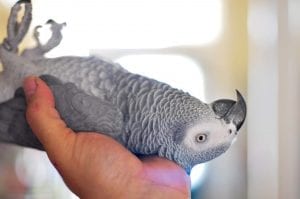
WAYS TO USE ESSENTIAL OILS WITH PARROTS
Diffusion
Use of a water-based , ultrasonic diffuser is recommended for households with birds. Diffusers that atomize essential oils directly from the bottle are not recommended (except for in a large and well-ventilated aviary). An ultrasonic diffuser has the added benefit of helping to humidify the air, which is good for parrots’ skin and respiratory tracts. Almost every essential oil single and blend has been diffused around birds, but “hot” oils such as cinnamon bark, thyme, and oregano should be approached with caution. Start with about 3 drops of oil in the diffuser and monitor the bird closely for the first 5-10 minutes. Increase the amount of oil and the frequency of diffusion gradually. Many households with birds diffuse essential oils round the clock and see amazing benefits in their birds. Angela Nelson (author of Aromatherapy for Parrots) states that “if you can stick your face, with your eyes wide open, directly in the mist of the diffuser and it does not irritate your eyes, nose, or throat, then you are safe to assume it will be just fine for your bird as well.”
Water misting
Mist the bird 2-3 times per day, avoiding the eye area. A few sprays is all that is needed to be effective, or you can completely soak the bird if you are seeking a stronger therapeutic effect. Please join our Facebook group in order to download an excellent general-purpose “Feather Spray” recipe. Dr. Shelton says that she uses this spray as a fundamental tool for her avian patients. She says that it helps support normal immune function as well as providing emotional support. Many members of our group have found it to be helpful for birds that pluck as a result of emotional conditions (all birds that pluck should receive a thorough work-up from an avian vet to rule out medical causes). The oils in the spray are absorbed through the skin and are taken orally as the bird preens after being misted. This makes water misting a good way to get essential oils into birds that are not accustomed to being handled. Dr. Shelton mentions adding 2-3 drops each of Frankincense and Helichrysum to the Feather Spray recipe for an added benefits.
Internal use of oils
This is generally done at a dose of 1 drop per liter of drinking water or by adding a toothpick of essential oil to moist food. When adding essential oils to water be sure to have plain water available for your bird as well.
Tenting
Tenting is a more intense version of diffusing and is generally done to address respiratory conditions. In tenting, you place the bird in a small cage or kennel, place a towel or blanket over the top, and place the diffuser in front of the whole ensemble. This keeps the bird in close proximity to the atomized essential oils. A bird that is being tented should be constantly watched and tenting should not be done for any more than 30 minutes at a time. Generally in a situation like this your bird is going to be under a veterinarian’s care.
Topical use of oils
When in doubt, essential oils should be diluted for topical application, but keep in mind that plant oils (such as fractionated coconut oil) will make your bird’s feathers greasy and greasy feathers prevent your bird from temperature regulating normally. For this reason, oils should only be applied topically to non-feathered areas such as the feet. One way to do this is to apply oils to your finger or arm and then asking your bird to “step up”. Diluted essential oils can also be applied to your bird’s feet using a roller bottle. For birds that cannot be handled, try applying oils to a favorite perch. One of Dr. Shelton’s favorite blends for topical application the equivalent of Grounding Blend. She finds that it is very helpful for any type of stress or fear-based situation, including everyday events like wing or nail clipping. Grounding Blend helps to instill courage, confidence, and self-esteem, which is a major issue for any bird who has had multiple homes or has been subject to abuse, neglect, or trauma in the past. We need to keep in mind as keepers of companion parrots that birds are prey animals and therefore are constantly on alert for threats. They often feel fearful in situations like a change to their routine or environment (such as rearranging furniture in a room or adding a new toy to the cage), a new pet or family member, or unusual noise (for instance construction workers at the house next door). Applying Grounding Blend to your bird’s feet in situations like these can help a lot. Because Grounding Blend already contains fractionated coconut oil, you do not need to dilute it further.
